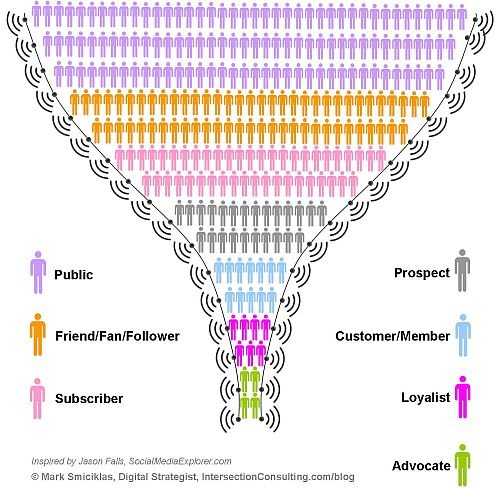Understanding Graphic Design
Graphic design plays a crucial role in shaping the visual identity of brands and communicating messages effectively. It combines creativity and technical skills to create compelling visuals that capture attention and convey meaning. Understanding the fundamentals of graphic design is essential for developing strong branding that resonates with audiences and distinguishes a brand in a competitive marketplace.
Definition and Role
Graphic design is the art and practice of creating visual content to communicate messages effectively through the use of typography, imagery, color, and layout. It plays a vital role in branding by developing a unique visual identity that represents a company’s values, mission, and personality. Through thoughtful design, brands can establish recognition, build trust, and differentiate themselves in a crowded marketplace. Ultimately, understanding graphic design helps businesses craft compelling visuals that resonate with their target audience and strengthen their overall brand presence.
Key Principles of Graphic Design
Understanding graphic design involves grasping how visual elements communicate ideas effectively and aesthetically to convey a brand’s message. It encompasses the art of combining images, typography, color, and layout to create compelling visuals that resonate with target audiences. In branding, graphic design plays a crucial role in establishing recognition, trust, and emotional connection with consumers.
The key principles of graphic design include balance, contrast, alignment, hierarchy, repetition, proximity, simplicity, and unity. Balance ensures visual stability, while contrast highlights important elements and creates visual interest. Alignment organizes elements for clarity, and hierarchy guides viewers through the content in order of importance. Repetition reinforces branding consistently, and proximity groups related items for coherence. Simplicity helps communicate messages clearly without unnecessary clutter, and unity ties all elements together to produce a harmonious overall look. Mastering these principles enables designers to craft visually appealing and effective branding materials.
Tools and Software
Understanding graphic design is essential for creating visually compelling branding that effectively communicates a message and establishes a brand identity. Graphic design combines creativity with technical skills to develop impactful visuals for various media platforms. Proficiency in tools and software such as Adobe Photoshop, Illustrator, and InDesign allows designers to craft logos, marketing materials, and digital content with precision and finesse. Mastery of these tools enables designers to experiment with color schemes, typography, and layouts, ensuring that the final product aligns with the brand’s vision and resonates with target audiences. Ultimately, a strong grasp of graphic design principles and the right set of software tools empower branding efforts to stand out and leave a memorable impression.
Types of Graphic Design
Understanding graphic design is essential for creating visually appealing and effective branding materials. It involves the art and craft of combining images, typography, and layout to communicate a message clearly and creatively. Different types of graphic design serve various purposes and audiences, helping brands establish their identity and connect with their target markets.
Types of graphic design include:
- Logo Design: Creating distinctive symbols or marks that represent a brand.
- Brand Identity Design: Developing comprehensive visual elements such as color schemes, typography, and style guidelines to maintain brand consistency.
- Advertising Design: Producing visual content for promotional campaigns across print and digital platforms.
- Packaging Design: Designing product packaging that attracts consumers and reinforces brand image.
- Web Design: Crafting website layouts, graphics, and user interfaces to provide engaging online experiences.
- Publication Design: Designing layouts for books, magazines, and brochures to improve readability and aesthetic appeal.
Fundamentals of Branding
Understanding the fundamentals of branding is essential for creating a strong visual identity that resonates with audiences. In the realm of graphic design, effective branding combines elements like logos, color schemes, typography, and imagery to communicate a brand’s values and personality. By mastering these core principles, designers can craft cohesive and memorable brand identities that establish trust and recognition in the marketplace.
Definition and Importance
Fundamentals of branding refer to the essential principles that establish and maintain a company’s identity in the minds of consumers. Branding involves creating a unique image and perception through various elements like logos, colors, messaging, and overall design, which helps distinguish a business from its competitors.
The importance of branding lies in its ability to foster customer recognition, loyalty, and trust. A strong brand can evoke emotional connections, influence purchasing decisions, and provide a competitive edge in the marketplace. In the realm of graphic design, effective branding uses visual elements to communicate the core values and personality of a brand, making it memorable and impactful for the target audience.
Brand Identity Components
Fundamentals of branding involve creating a strong and recognizable identity that resonates with the target audience. Central to this process is developing a clear understanding of the brand’s core values, mission, and vision, which guide all branding efforts.
Brand identity components are the essential elements that visually and verbally communicate the brand’s essence. These include the logo, color palette, typography, imagery, and messaging. Together, these components create a cohesive and consistent appearance that helps differentiate the brand in the marketplace and build trust with consumers.
Brand Strategy and Positioning
Fundamentals of branding, brand strategy, and positioning are essential concepts that underpin effective graphic design and help establish a company’s identity in the marketplace. A strong brand creates recognition, builds trust, and differentiates a business from competitors. Understanding these fundamentals enables designers to create visuals that accurately reflect the brand’s core values and message.
Brand strategy involves defining the long-term plan for the development of a successful brand to achieve specific goals. It encompasses target audience analysis, brand messaging, and value proposition, guiding the overall visual and communicative aspects of branding efforts.
Positioning refers to how a brand is perceived relative to competitors in the minds of consumers. It involves identifying a unique space in the market and crafting visual elements that communicate this distinctiveness effectively. Proper positioning ensures that a brand’s identity resonates with its target audience and reinforces its market position.
- Establish clear brand goals and objectives
- Understand the target audience and market landscape
- Develop a compelling brand message and value proposition
- Create visual identity elements such as logo, color palette, typography, and imagery that reflect the brand’s essence
- Maintain consistency across all visual and communicative touchpoints
- Regularly evaluate and adapt the strategy to market changes and consumer feedback
Brand Consistency
Brand consistency is a fundamental aspect of effective branding within graphic design, ensuring that a company’s visual elements convey a unified message across all platforms. It involves maintaining uniformity in colors, typography, logos, and imagery to reinforce brand recognition and trust among consumers. Consistent branding helps create a cohesive identity that distinguishes a business from its competitors and establishes a strong emotional connection with its audience. By adhering to core brand principles in every graphic design and communication, companies foster reliability and professionalism, ultimately supporting long-term brand loyalty.
Interconnection Between Graphic Design and Branding
Graphic design and branding are intrinsically linked, working together to establish a visual identity that resonates with target audiences. Effective graphic design helps communicate a brand’s values, personality, and message through compelling visuals, creating a memorable and cohesive identity. When seamlessly integrated, these two elements reinforce brand recognition and foster consumer trust, making their interconnection vital for successful brand development.
Visual Identity Development
Graphic design and branding are intrinsically linked, serving as fundamental components in establishing a company’s visual identity. Effective graphic design translates brand values and messaging into visually compelling elements that resonate with the target audience. Through the development of logos, color schemes, typography, and imagery, graphic design helps craft a cohesive visual identity that distinguishes a brand from its competitors. Visual identity development is a strategic process that ensures consistency across all marketing platforms, reinforcing brand recognition and loyalty. By carefully integrating design principles with brand objectives, businesses can create a memorable and authentic visual presence that communicates their essence effectively.
Creating Memorable Logos
Graphic design and branding are deeply interconnected, as effective visual elements are essential to shaping a brand’s identity and perception. Creating memorable logos is a fundamental aspect of this relationship, serving as a visual representation that captures the essence of a brand. A well-designed logo not only attracts attention but also communicates core values and fosters brand recognition. Through strategic use of color, typography, and imagery, graphic designers craft logos that are distinctive and memorable, helping brands stand out in a competitive marketplace. Ultimately, strong logo design acts as the cornerstone of branding, reinforcing a brand’s message and creating a lasting impression on audiences.
Designing Brand Collateral
Graphic design and branding are intrinsically connected, working together to create a cohesive visual identity for a business or product. Effective graphic design enhances brand recognition by translating core values, personality, and messaging into visual elements such as logos, color schemes, and typography. Designing brand collateral, like business cards, packaging, and digital assets, requires a strategic approach that aligns with the overall brand identity to ensure consistency and reinforce brand reputation. This synergy between graphic design and branding helps establish trust, attract target audiences, and differentiate a brand in a competitive marketplace.
Digital and Print Branding
Graphic design plays a crucial role in shaping a brand’s identity by creating visual elements that communicate the core values and personality of a business. When integrated effectively with branding strategies, graphic design ensures consistency across all platforms, reinforcing brand recognition and loyalty. The interconnection between graphic design and branding extends to both digital and print formats, where visual elements such as logos, color schemes, typography, and imagery are adapted to suit different mediums. Digital branding focuses on dynamic, interactive designs that engage audiences online, while print branding emphasizes tangible, high-quality visuals that leave a lasting impression. Seamlessly blending these aspects enhances a brand’s overall presence, ensuring a cohesive experience whether a customer interacts with a website, mobile app, or printed marketing materials. Ultimately, strong graphic design serves as the visual language of a brand, bridging the gap between digital innovation and traditional print mediums to create a unified brand identity.
Best Practices in Graphic Design for Branding
Effective graphic design plays a crucial role in establishing a strong and recognizable brand identity. By adhering to best practices, designers can create visually compelling and cohesive visuals that communicate a brand’s values and personality. Consistency in color schemes, typography, and imagery helps build brand recognition and trust, making design an essential tool for successful branding strategies.
Understanding the Target Audience
Understanding the target audience is essential in creating effective branding through graphic design. It allows designers to tailor visual elements such as color schemes, typography, and imagery to resonate with the intended demographic. By researching audience preferences, behaviors, and cultural nuances, designers can develop branding that connects emotionally and establishes trust. Additionally, incorporating audience insights ensures that the visual identity is relevant and memorable, facilitating stronger brand recognition and loyalty.
Color Theory and Its Impact
Effective graphic design plays a crucial role in creating a strong brand identity, making visual consistency and clarity essential. When developing branding, designers should prioritize simplicity and coherence to ensure the brand message is easily recognizable and memorable. Incorporating key visual elements consistently across all platforms enhances brand trust and professionalism.
Color theory is a fundamental aspect of graphic design that significantly influences branding perception. Understanding color psychology helps in selecting hues that evoke desired emotions and associations. For example, blue conveys trust and reliability, while red evokes excitement and urgency. Harmonizing colors through complementary, analogous, or triadic schemes can create visually appealing and balanced designs.
The impact of color in branding extends beyond aesthetics; it affects consumer behavior and brand recognition. Proper use of color can differentiate a brand from competitors, increase visual appeal, and reinforce brand values. Designers should consider accessibility and cultural connotations when choosing color palettes to ensure the brand resonates effectively with diverse audiences.
Typography and Readability
Effective graphic design is essential for creating a strong brand identity, and this begins with thoughtful decisions around branding, typography, and readability. Consistency in visual elements helps establish brand recognition and trust among your audience. Choose a cohesive color palette and logo that reflect your brand’s personality, and ensure all design components align with this identity.
Typography plays a crucial role in conveying your brand message. Select fonts that match your brand’s tone—whether professional, playful, or modern—and use them consistently across all materials. Limit your font choices to two or three to maintain visual harmony and avoid clutter.
Readability is vital in ensuring your message reaches your audience effectively. Use clear, legible fonts with appropriate sizing, spacing, and contrast. Avoid overly decorative or complex fonts for body text, and ensure there is enough whitespace around text elements to prevent visual fatigue. Good hierarchy, through size and weight variations, also guides the viewer’s attention naturally and enhances overall clarity.
Leveraging White Space
Effective use of white space is a fundamental best practice in graphic design for branding, as it enhances visual appeal and communicates clarity. Properly leveraging white space allows brand elements to breathe, making key messages stand out and ensuring the design doesn’t appear cluttered or overwhelming.
- Maintain balance by distributing white space evenly around crucial elements to create harmony in your design.
- Use white space strategically to guide the viewer’s eye toward the most important aspects of your branding, such as logos or calls to action.
- Avoid overcrowding; give each element room to be appreciated and understood without competing for attention.
- Align text and graphics thoughtfully to generate clean lines and a cohesive visual flow.
- Apply white space consistently across all branding materials to establish a unified and recognizable identity.
Maintaining Cohesion Across Platforms
Maintaining cohesion across platforms is essential for effective branding through graphic design. It begins with establishing a strong visual identity, including a consistent color palette, typography, and logo usage that reflect the brand’s personality. Ensuring these elements are applied uniformly across websites, social media, print materials, and advertising helps create a recognizable and professional image. Utilizing a comprehensive brand style guide provides clear instructions for designers and marketers, facilitating consistency even when team members or agencies change. Additionally, adapting designs thoughtfully to suit different platform requirements while preserving core elements ensures the brand remains unified without losing impact. Regularly reviewing and updating visual assets ensures that the brand stays relevant and cohesive over time. Ultimately, cohesive graphic design across platforms builds trust, enhances brand recognition, and reinforces a clear brand message to the audience.
Emerging Trends in Graphic Design and Branding
Emerging trends in graphic design and branding are reshaping the way businesses communicate their identity and connect with audiences. As technology advances and consumer preferences evolve, designers are exploring innovative visual strategies that enhance brand recognition and engagement. Staying abreast of these trends is essential for brands seeking to stand out in a competitive digital landscape and create memorable, impactful visual experiences.

Minimalism and Simplicity
Emerging trends in graphic design and branding are shaping the way brands communicate and connect with audiences. Minimalism and simplicity have become central, focusing on clean lines, limited color palettes, and uncluttered layouts to create impactful and memorable visuals. This approach helps brands convey clarity and elegance, making their messages more accessible and easier to remember. Additionally, there is a shift towards more authentic and personalized branding, emphasizing storytelling and human connection. Incorporating bold typography and dynamic visual elements also helps brands stand out in a crowded digital landscape. Overall, these trends reflect a move toward more thoughtful, streamlined, and emotionally resonant design strategies that prioritize user experience and authenticity.
Bold Typography and Colors
Emerging trends in graphic design and branding are shaping the way brands communicate visually. Bold typography has become a dominant element, capturing attention and conveying messages with impact. Bright, vibrant colors are being used strategically to evoke emotions and create memorable visual identities. Minimalistic yet daring designs are blending simplicity with visual punch, helping brands stand out in crowded markets. Digital and interactive elements are also gaining popularity, offering engaging experiences that deepen brand connection. Overall, these trends emphasize clarity, boldness, and emotional resonance, driving innovative branding strategies in the evolving landscape of graphic design.
Motion Graphics and Video Content
Emerging trends in graphic design and branding, motion graphics, and video content are shaping the future of visual communication. As technology advances, designers are exploring new methods to create engaging and memorable experiences for audiences.
- Minimalist Design: Simplified visuals with clean layouts continue to dominate, emphasizing clarity and focus on core messages.
- Bold Typography: Custom, expressive fonts are being used to convey brand personality and create visual impact.
- Neumorphism and Soft UI: These design trends add subtle depth and realism through gentle shadows and shapes, enhancing user interface aesthetics.
- Motion Graphics and Animation: Dynamic visuals, including animated logos and interactive videos, are engaging viewers and improving brand storytelling.
- 3D Elements and Augmented Reality: Incorporating 3D graphics and AR experiences makes branding more immersive and interactive.
- Sustainable and Eco-Friendly Design: Brands are adopting visuals that reflect environmental consciousness, using earthy tones and nature-inspired motifs.
- Vivid Color Palettes: Bright, contrasting colors are used to capture attention and evoke strong emotional responses.
- Personalization in Video Content: Tailored video experiences and user-specific content enhance engagement and brand loyalty.
- Short-Form Video Content: Platforms like TikTok and Instagram prioritize quick, impactful videos, pushing brands to craft concise, compelling stories.
Eco-Friendly and Sustainable Design
Emerging trends in graphic design and branding increasingly focus on eco-friendly and sustainable practices, reflecting a growing global emphasis on environmental responsibility. Designers are integrating natural color palettes, handcrafted elements, and organic shapes to convey authenticity and a connection to nature. Minimalist design strategies are favored to reduce material use and waste, while digital platforms encourage more sustainable production methods. Brands are also adopting recyclable and biodegradable materials in packaging and promotional materials, reinforcing their commitment to sustainability. Additionally, the use of eco-conscious messaging and visuals helps communicate a company’s environmental values, fostering stronger consumer trust and loyalty. Overall, sustainable design practices are reshaping the landscape of graphic design and branding, making them more environmentally considerate and socially responsible.
Case Studies and Examples
Case studies and examples are essential tools in understanding the effective strategies behind successful graphic design and branding. They provide insightful references that showcase practical applications, innovative solutions, and the creative process behind memorable visual identities. By exploring real-world examples, designers and marketers can learn valuable lessons and inspire their own projects to better communicate brand story and values.
Successful Brand Rebrands
Successful brand rebrands often serve as inspiring case studies in the realm of graphic design and branding, demonstrating how strategic visual changes can revitalize a company’s identity and market presence. One notable example is Airbnb, which underwent a comprehensive rebrand in 2014, introducing a new logo called the “Bélo” that symbolized belonging and community, coupled with a fresh, modern visual identity. This redesign helped reposition Airbnb from a mere accommodation platform to a global movement emphasizing shared experiences. Another success story is Burberry, which revived its iconic trench coat and classical British aesthetic through consistent branding, innovative digital campaigns, and a contemporary logo refresh. This rebrand not only modernized the brand’s visual identity but also re-established its position in the luxury fashion industry. Additionally, the rebranding of Microsoft in 2012, featuring a simplified logo and a new design language, reflected its shift toward a more user-friendly and innovative technology company, resonating well with a broader audience. These cases exemplify how deliberate and well-executed graphic design and branding strategies can significantly reinforce brand perception and drive growth.
Iconic Logo Evolution
Case studies and examples of iconic logo evolution provide valuable insights into how brands adapt their visual identities over time to maintain relevance and strengthen recognition. These evolution stories often highlight strategic redesigns that balance modernization with preserving core brand elements.
For instance, the evolution of the Apple logo from a detailed, skeuomorphic illustration of Isaac Newton to the sleek, minimalist apple symbol reflects a shift towards simplicity and modern aesthetics, aligning with the company’s innovative ethos. Similarly, the transformation of the Starbucks logo from an intricate siren in a circular badge to a simplified, green circular emblem demonstrates how brands streamline designs for versatile use across various media.
Examining these case studies reveals common themes in successful logo evolution, such as minimalism, scalability, and relevance to contemporary design trends. These examples serve as instructive models for designers and brands aiming to refresh their identities without losing their core recognition.
Understanding the evolution of iconic logos underscores the importance of strategic planning in brand identity development, ensuring longevity and adaptability in a changing visual landscape.
Branding Failures and Lessons Learned
Case studies and examples in graphic design and branding offer valuable insights into successful strategies and common pitfalls. Analyzing real-world branding failures reveals important lessons about consistency, target audience understanding, and cultural sensitivity. For instance, when a brand changes its logo without maintaining visual continuity, it can confuse loyal customers and dilute brand recognition. Similarly, over-complicated design elements or inconsistent messaging often weaken brand identity and reduce market impact. On the other hand, successful branding examples, such as Nike’s iconic swoosh or Apple’s minimalist approach, demonstrate the power of simplicity and emotional connection. Learning from these case studies helps designers and brands develop more effective, memorable identities that resonate with their audiences. Ultimately, understanding branding failures enhances the ability to craft cohesive and impactful visual strategies that foster trust and loyalty.





